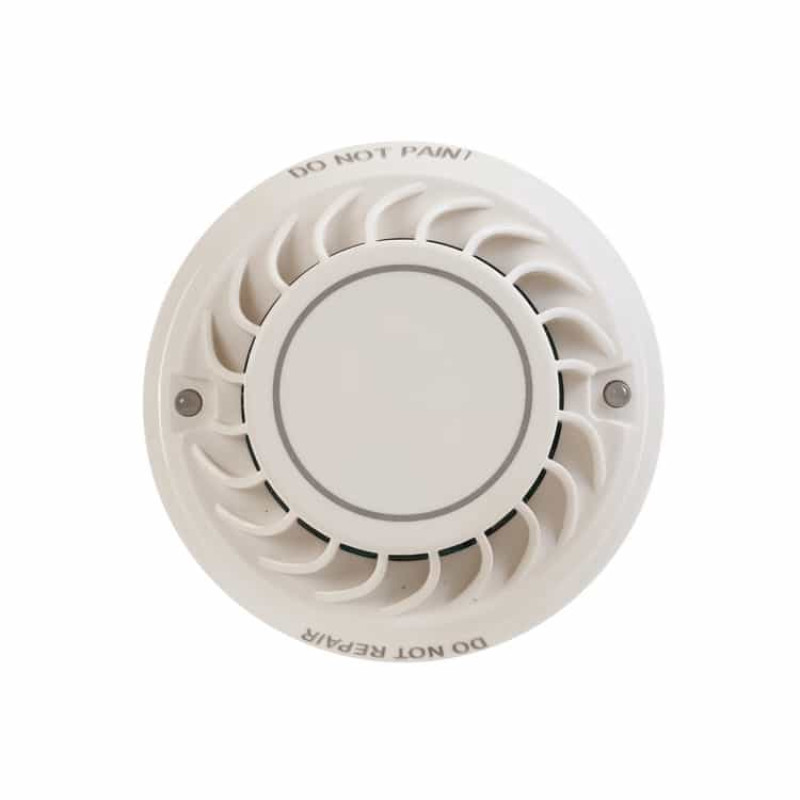Product: Addressable Heat Detector
Product Description
Addressable Heat Detector are advanced fire detection devices designed to identify increases in temperature within their surroundings. Unlike traditional heat detectors, which only activate when a specific temperature threshold is reached, addressable heat detectors communicate their status to a fire alarm control panel, providing real-time monitoring and precise identification of the device that has activated. This feature enhances the efficiency of fire response and minimizes false alarms.
Technical Parameters
- Voltage Range: 16-32 VDC
- Alarm Current: 10-100 mA
- Quiescent Current: 40 µA @ 24 VDC
- Operating Temperature: 0°C to +90°C
- Humidity: <95% RH
- Coverage Area: 50 sq. meters
- Wiring: 2-wire configuration
- Cancel Feature: Allows for manual resetting
- Product Size: 10.6 x 10.6 x 5.2 cm
What Are Addressable Heat Detector?
Addressable Heat Detectors are devices used in fire alarm systems that detect heat rather than smoke. They are particularly effective in environments where smoke detection might cause false alarms, such as kitchens or industrial settings. These detectors utilize advanced technology to communicate their status directly to the fire alarm control panel, making it easier for operators to pinpoint the location of a potential fire.
How They Work
Addressable heat detectors operate by continuously monitoring the ambient temperature. When the temperature rises above a predetermined threshold, the detector sends a signal to the fire alarm control panel, which then processes this information. If the increase in temperature is significant enough to indicate a fire, the panel triggers an alarm. The addressable feature allows the system to identify the specific detector that activated, facilitating quicker response times.
Where They Are Used
Addressable heat detectors are commonly used in:
- Industrial Facilities: Where dust and other particles may trigger false alarms with smoke detectors.
- Kitchens: Where cooking activities can produce smoke.
- Warehouses: To monitor large areas with high ceilings.
- HVAC Systems: To prevent overheating in mechanical rooms.
- Residential Properties: In areas where smoke detectors might be prone to false alarms, like attics or garages.

